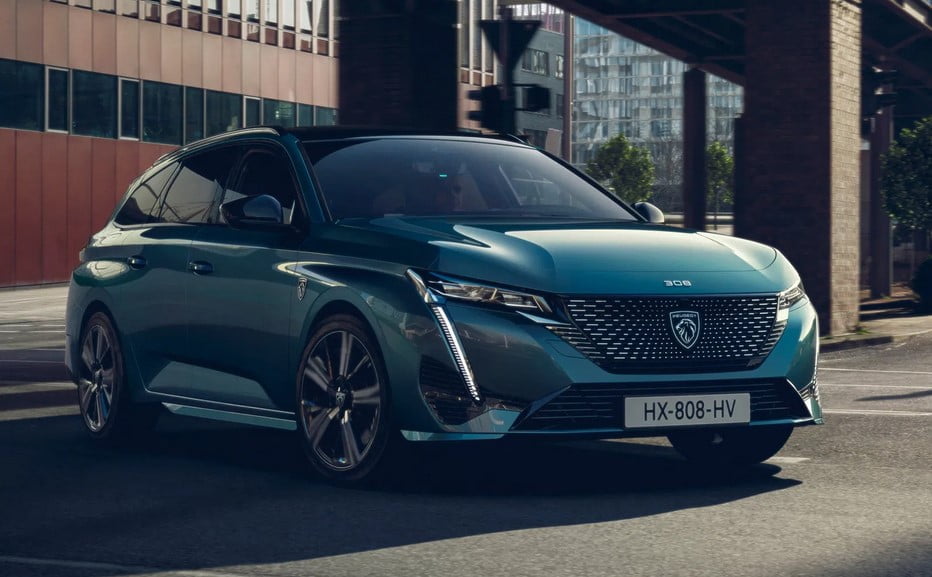
Peugeot has expanded its new 308 lineup with the introduction of the 308 SW estate, set to hit the roads by the end of 2021 with plug-in hybrid power.
Positioned as a competitor to the Ford Focus Estate and Volkswagen Golf Estate, the new Peugeot 308 SW offers a more practical and cargo-friendly alternative to the sportier 308 hatchback. The design integrates the style of the hatchback into a larger C-segment family estate.
The key focus for most 308 SW buyers will be the boot space. With increased length compared to its hatchback sibling at 4.64 meters (the hatch is 4.37 meters), the longer overhang results in expanded cargo capacity of 608 liters with the rear seats in place. While Peugeot has not revealed the impact of the battery and motor on the plug-in hybrid versions, a deficit of around 50 liters compared to the hatchback can be expected.
The rear seats can be folded in a 40:20:40 split, expanding the cargo space to a claimed 1,634 liters with the row folded. Access is facilitated by an automatic tailgate, and the boot floor has two levels.
Beyond the extended rear overhang, the wheelbase is 55 mm longer than that of the 308 hatchback. This increase should enhance the feeling of spaciousness for rear-seat passengers, providing an additional 129 mm of knee space in the second row.
Upfront, the 308 SW features the same dashboard and infotainment revolution as seen in the hatchback. A new angular dashboard with a horizontal 10-inch infotainment screen, running on Peugeot’s i-Connect Advanced software, takes center stage. It supports wireless connectivity for both Apple CarPlay and Android Auto. The vehicle also features the new natural language voice control ‘OK Peugeot.’
Beneath the standard 10-inch screen, the 308 SW includes the new configurable i-Toggle digital switch panel, while the fully digital i-Cockpit instrumentation is also featured.
In terms of driver assistance features, the 308 SW will offer semi-autonomous driving assistance starting mid-2022. The Drive Assist 2.0 package combines adaptive cruise control with stop-and-go functionality, lane-keeping assistance, semi-automatic lane change, and automatic speed adaptation for curves.
The engine lineup begins with the PureTech 130 turbocharged three-cylinder 1.2-liter petrol engine, producing 128 hp and driving the front wheels through an eight-speed automatic gearbox. A diesel option is available with the BlueHDI four-cylinder 1.5-liter unit, also producing 128 hp and sending power to the front axle.
The two hybrid options offered in the 308 SW are front-wheel drive and also use the EAT8 automatic transmission. The Hybrid 225 model combines a turbocharged 1.6-liter four-cylinder petrol engine with 178 hp, a 107 hp electric motor, and a 12.4 kWh battery. The maximum combined power is 222 hp, with CO2 emissions as low as 26 g/km. It claims up to 37 miles of total electric range, with a recharge taking just under two hours with an optional 7.4 kW charger.
The less powerful Hybrid 180 model shares the same specifications and charging technology, using a 148 hp petrol engine and the same electric motor and battery combination for a maximum power of 178 hp.







